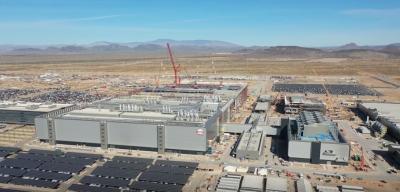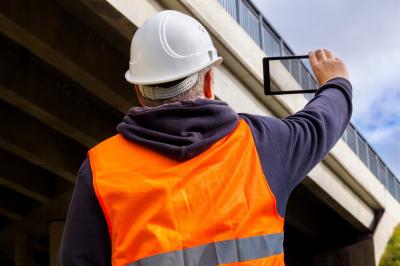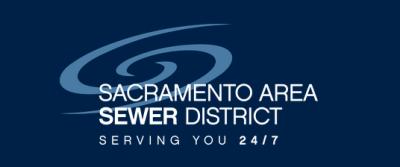The United States Capitol Dome is currently in the middle of a multi-year project started by the Architect of the Capitol (AOC) to repair years of cracks and deficiencies brought about by aging and weather. The Dome was originally constructed of cast iron more than 150 years ago, and has not undergone a complete restoration since 1960. More than 1,000 cracks and deficiencies have been identified.
According to the AOC website, because the Capitol Dome is predominately made of cast iron, exposure to rain, snow, sleet and sun has caused damage to its exterior. Water infiltrated through pin holes in the Statue of Freedom, and through cracks and open joints throughout the exterior shell including the tholos balustrade, the base of the cupola, and the boilerplate balcony level. Leaks in the interstitial space promoted the rusting of the ironwork and the failure of the protective paint coatings.
Additionally, the website reported that the decorative elements that give the Capitol Dome its unique character are rusting, and in some cases falling from the structure. If these repairs are not made, the artwork in the Rotunda, including the Apotheosis of Washington and the Frieze of American History, are at great risk of damage due to water leaks.
"As stewards of the Capitol for the Congress and the American people, we must conduct this critical work to save the Dome," AOC’s Stephen T. Ayers, FAIA, LEED AP stated on the website. "From a distance, the Dome looks magnificent, thanks to the hard work of our employees. On closer look, under the paint, age and weather have taken its toll and the AOC needs to make repairs to preserve the Dome."
This project is needed to stop the current level of deterioration in the Dome’s cast iron, as well as to ensure the protection of the interior of the Dome and Rotunda. During the last exterior renovation, the Dome was stripped of its paint so the ironwork could be repaired and primed with a rust inhibitor. As part of its comprehensive project planning process, the AOCl is undertaking a similar renovation. The restoration project includes removal of old paint, repairs to the cast iron, and repainting.
The AOC will supervise the project to ensure it remains on time and on budget. Turner-Smoot, a joint venture, is the main contractor. It was awarded in November 2013, and preparation work began in January 2014. The Dome Restoration Project’s authorized budget for this phase of the project is $59.55 million. This includes construction, contingency costs, and project support.
The planned completion date for exterior work is winter 2015, and interior work is expected to be complete by the fall of 2016. The entire project will be complete before the next Presidential Inauguration in 2017.
The majority of the work will be done at night and on weekends to ensure minimal disruption to Congressional business, events, and public tours. However, Dome tours will not be offered while the project is underway. To protect the public during the project, a canopy system in the shape of a doughnut was reportedly installed in the Capitol Rotunda. The configuration allows the Apotheosis of Washington mural, in the eye of the Rotunda, to be visible during the restoration process.
Following installation of safety netting, a scaffold system was installed to surround the exterior of the Dome. Scaffold towers and scaffold bridging were also constructed on the West Front of the U.S. Capitol Building (the National Mall side) to help move materials to the work areas.
The Dome Restoration Project team is currently working behind large containment areas to remove lead paint and apply primer before repairing the cracks. Due to the enclosure, the lights in the Tholos that signify when either the House of Representatives or the U.S. Senate are in session are no longer visible, so four temporary LED lights were placed on the scaffold projecting outward from the Tholos. After work is complete and the enclosure is removed, the regular Tholos lights will again be in operation.
The Rotunda is used for important ceremonial events, such as the lying in state of eminent citizens, the awarding of Congressional Gold Medals and the dedication of works of art.
The focus of the Rotunda Restoration will be to remove hazardous materials (such as lead paint), restore ironwork, upgrade electrical and mechanical systems, install new lighting, and repaint it to historically appropriate colors. This effort is planned to begin late July 2015 and be complete prior to the Presidential Inauguration in January 2017.
Construction of the original Capitol building began in 1793 and was completed in 1826. It was made of brick clad in sandstone. The north and south wings and connecting corridors added in the mid-19th century and the replica of the East Front constructed in the 20th century are made of brick clad in marble, and the dome is made of 8,909,200 pounds of cast iron.
The building’s length, from north to south, is 751 feet 4 inches; its greatest width is 350 feet. Its height above the base line on the east front to the top of the Statue of Freedom is 288 feet.
Congress first met in the building on Nov. 17, 1800.
The restoration project involves 1.1 million lbs. of scaffold, more than 75,000 pieces of equipment, 52 miles of scaffold pipe, and two miles of decking.
In the Rotunda, there are five layers of safety netting, a total of 14,700 square feet and 6,100 pounds.
A total of 12,800 inches of cracked cast iron will be repaired (8,200 inches will be repaired with the "lock and stitch" technique, and 4,600 inches will be repaired with the "Dutchman" technique). A total of 1,215 gallons of paint will be used to repaint the Dome - three layers with 405 gallons each.
The estimated historical cost of the United States Capitol as of 2003 was $133 million. This includes the original building (the Rotunda and the north and south wings) as it stood in 1824 ($2.4 million), the cast-iron dome added in 1866 ($1million), and the extensions (which house the present House and Senate chambers as well as office and support spaces) completed in 1867 ($8.1 million).Numerous additions, renovations and modernization efforts made throughout the years added another $122 million. In addition, improvements to the Capitol Grounds had an estimated historical cost of $33.8 million as of fiscal year 2003; these include such items as landscaping, sidewalks, and security features.
This estimate does not include the newest addition to the Capitol, the Capitol Visitor Center, which was constructed after 2003. The numbers are given in historical dollars spent, and have not been inflated to reflect current-day replacement value.
RELATED NEWSLETTER ITEMS
Watch How Cranes, Robots Help Ports Run Like a Tight Ship
Managing Suspected Drug Use at the Jobsite
Today's top stories















